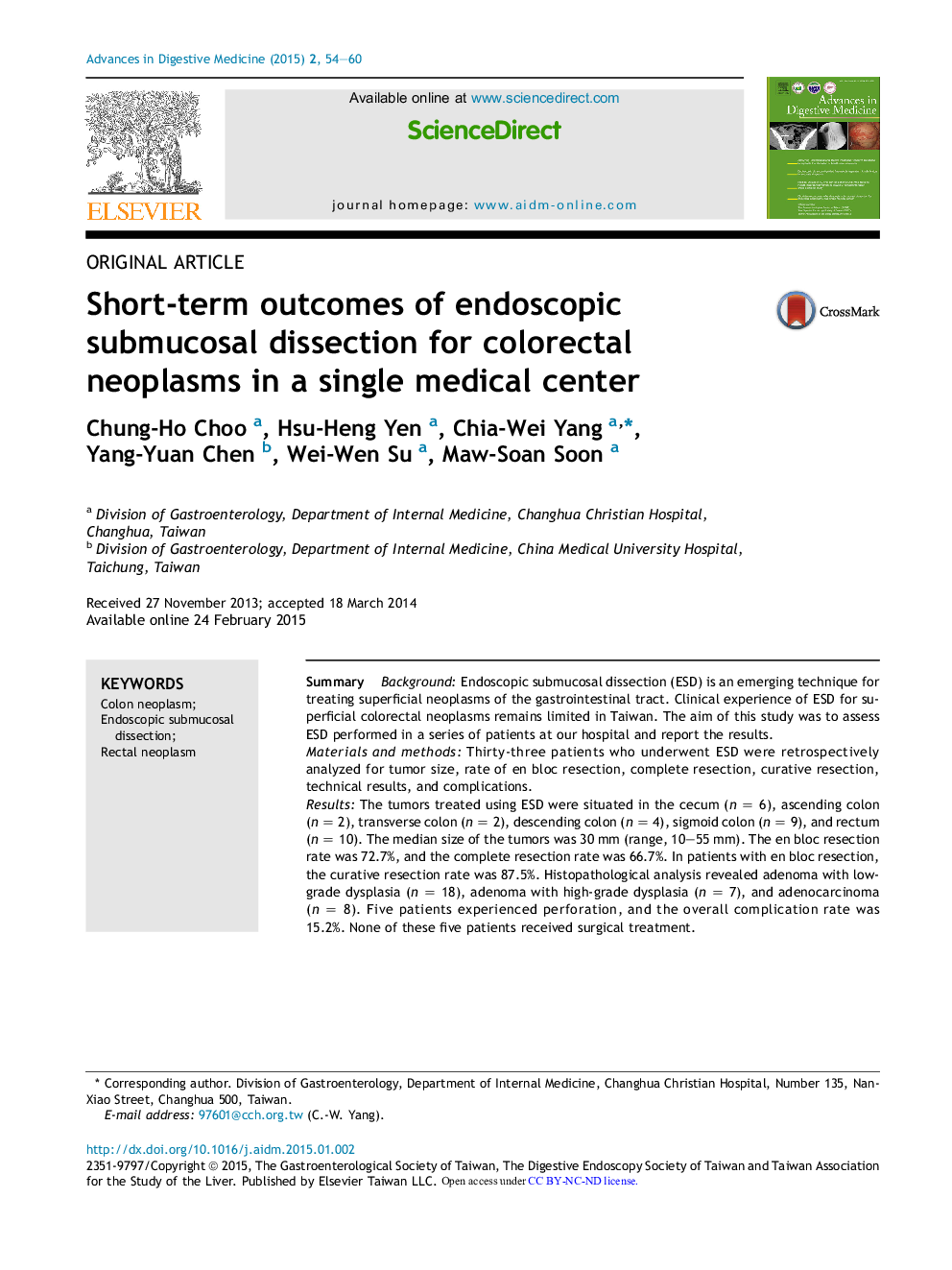| Article ID | Journal | Published Year | Pages | File Type |
|---|---|---|---|---|
| 3278568 | Advances in Digestive Medicine | 2015 | 7 Pages |
SummaryBackgroundEndoscopic submucosal dissection (ESD) is an emerging technique for treating superficial neoplasms of the gastrointestinal tract. Clinical experience of ESD for superficial colorectal neoplasms remains limited in Taiwan. The aim of this study was to assess ESD performed in a series of patients at our hospital and report the results.Materials and methodsThirty-three patients who underwent ESD were retrospectively analyzed for tumor size, rate of en bloc resection, complete resection, curative resection, technical results, and complications.ResultsThe tumors treated using ESD were situated in the cecum (n = 6), ascending colon (n = 2), transverse colon (n = 2), descending colon (n = 4), sigmoid colon (n = 9), and rectum (n = 10). The median size of the tumors was 30 mm (range, 10–55 mm). The en bloc resection rate was 72.7%, and the complete resection rate was 66.7%. In patients with en bloc resection, the curative resection rate was 87.5%. Histopathological analysis revealed adenoma with low-grade dysplasia (n = 18), adenoma with high-grade dysplasia (n = 7), and adenocarcinoma (n = 8). Five patients experienced perforation, and the overall complication rate was 15.2%. None of these five patients received surgical treatment.ConclusionESD is a challenging but relatively safe procedure to treat large superficial colorectal neoplasms. However, additional experience is required to achieve higher en bloc resection, complete resection, and curative resection rates.
